Physical Address
304 North Cardinal St.
Dorchester Center, MA 02124
Physical Address
304 North Cardinal St.
Dorchester Center, MA 02124
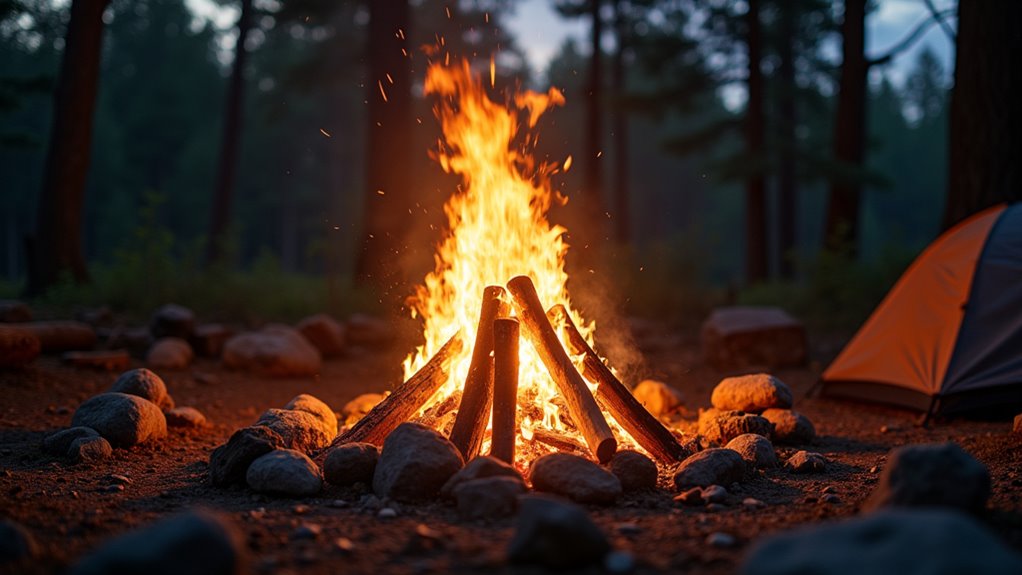
From choosing poor locations to improper extinguishing, these nine critical campfire mistakes could turn your outdoor adventure into a dangerous disaster.
You’ve probably watched your campfire sputter and smoke more than it should, or felt that nagging worry about whether you’ve actually put it out completely. Building a proper campfire seems straightforward, but there’s a surprising number of ways things can go wrong—from picking the wrong spot to using wood that won’t cooperate. These mistakes don’t just ruin your evening; they can create serious safety hazards that follow you long after you’ve packed up and headed home.
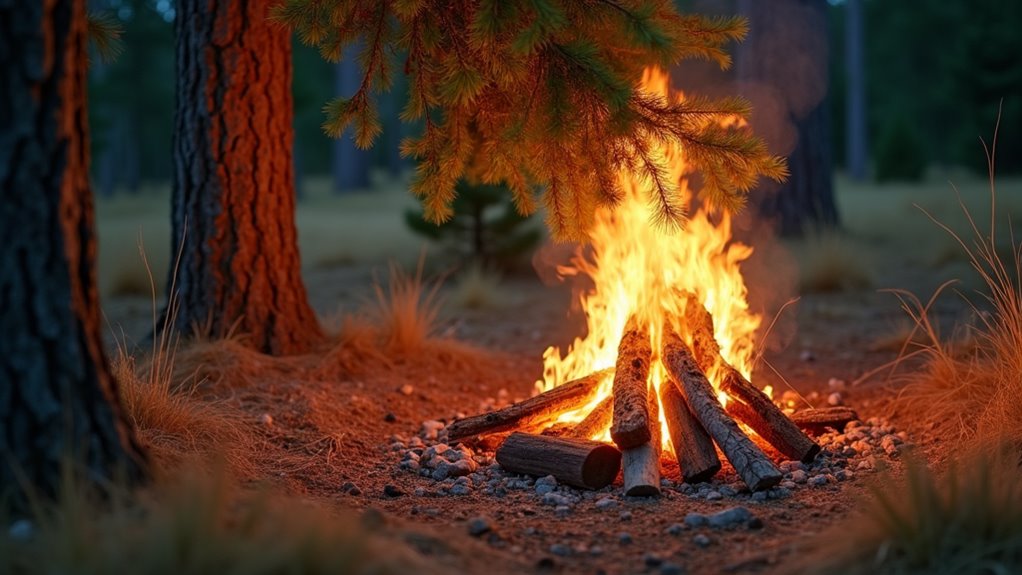
Before you even strike a match, you’ll want to scout the perfect spot for your campfire. Don’t just plop down anywhere that looks convenient. You’re making a dangerous mistake if you build too close to tents, trees, or dry vegetation.
Look for a spot that’s at least 15 feet away from anything flammable.
Keep your campfire a safe 15-foot distance from tents, trees, and any other flammable materials to prevent dangerous accidents.
Avoid windy areas where sparks can easily spread. Rocky or sandy ground works best – never build directly on grass or leaves.
Check local fire restrictions and use designated fire rings when they’re available.
Stay away from overhanging branches, even if they seem high enough. Wind can push flames higher than you’d expect.
Also, consider your neighbors. Nobody wants smoke blowing into their campsite all night long.
Having the right fire starters on hand will make the lighting process much smoother once you’ve selected your ideal location.
Once you’ve found the right location, don’t assume the bare ground is ready for your fire. You need proper containment to prevent your campfire from spreading beyond control.
If there’s an existing fire ring, use it. Clear out old ashes and debris first. When no ring exists, create one using rocks about the size of footballs. Arrange them in a circle roughly three feet across, leaving gaps for airflow. Avoid river rocks or stones that might’ve absorbed water—they can explode when heated.
Inside your ring, clear away all flammable materials like leaves, pine needles, and dry grass down to bare soil. Create this cleared zone at least ten feet around your fire ring.
This containment system is your safety net against runaway flames. Whether you’re camping in the UK’s national parks or remote wilderness areas, having a proper fire setup helps you make the most of your outdoor adventure while staying within your travel budget.
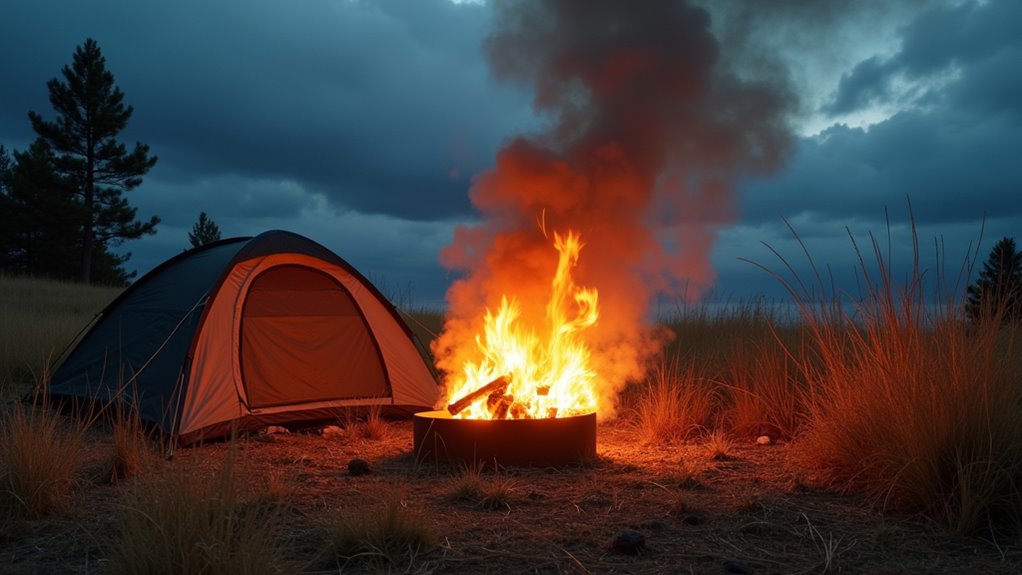
Wind can turn a controlled campfire into a dangerous situation faster than you might expect. Before lighting your fire, check the wind direction and speed. Strong winds can blow embers beyond your fire ring, potentially igniting nearby vegetation or camping gear.
Position yourself upwind when starting the fire to avoid smoke and sparks blowing toward you.
Don’t build fires during windy conditions exceeding 15 mph or when weather forecasts predict high winds. Dry conditions combined with wind create perfect wildfire scenarios.
If wind picks up after you’ve started your fire, extinguish it immediately rather than risk losing control.
Always monitor weather conditions throughout your camping trip. What starts as a calm evening can quickly change, and you’ll need to respond accordingly to maintain safety.
As a beginner camper, understanding these weather-related fire safety principles is crucial for developing good outdoor practices from the start.
Green or wet wood will sabotage your campfire before you even get it started. You’ll waste time, matches, and patience trying to ignite wood that simply won’t catch. Wet wood creates excessive smoke instead of flames, making your campfire experience miserable for everyone nearby.
Green wood contains too much moisture and sap, preventing proper combustion. It’ll hiss, pop, and produce thick smoke that stings your eyes. You need seasoned, dry wood that’s been dead for at least six months.
Green wood’s excess moisture and sap create hissing, popping fires with eye-stinging smoke instead of clean flames.
Test your wood by knocking two pieces together – dry wood produces a sharp crack, while wet wood makes a dull thud. Look for wood that’s lightweight, has loose bark, and shows cracks at the ends.
Always collect your firewood before you need it. Just like choosing between renting or buying a boat for fishing, selecting the right wood requires considering your immediate needs versus long-term planning.
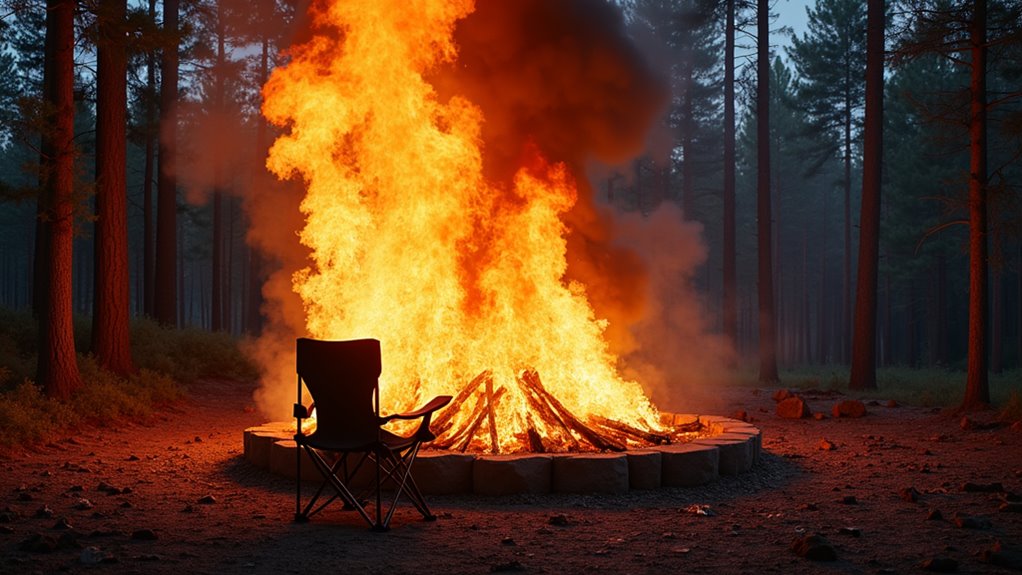
While it’s tempting to stack logs high for an impressive blaze, building too large of a fire too quickly will backfire on you. Large fires are harder to control and can become dangerous fast. They consume fuel rapidly, leaving you scrambling for more wood when you could be enjoying your evening.
Start small with tinder and kindling, then gradually add larger pieces as the flames establish themselves. This approach gives you better control over the fire’s size and intensity.
You’ll also use less wood overall since smaller fires burn more efficiently. Following these essential tips will help you avoid one of the most common campfire building mistakes that can ruin your outdoor experience.
Before you even strike a match, you need to gather three times more kindling and tinder than you think you’ll need. Most beginners underestimate how much material it takes to sustain a flame from spark to established fire.
You’ll burn through dry grass, bark strips, and pencil-thin twigs faster than expected.
Collect tinder that’s bone-dry and fluffy—birch bark, cedar bark, or char cloth work best. For kindling, gather progressively thicker sticks from matchstick-size to thumb-thickness.
Don’t rely on finding materials around your fire ring; scout the area thoroughly beforehand.
Running out mid-process means watching your precious ember die while you scramble for fuel. That’s frustrating and wasteful. Prepare abundantly, and you’ll shift smoothly from tinder to kindling to fuel wood.
Once your fire is established, having a well-organized camping kitchen setup nearby makes cooking and meal preparation much more efficient and enjoyable.
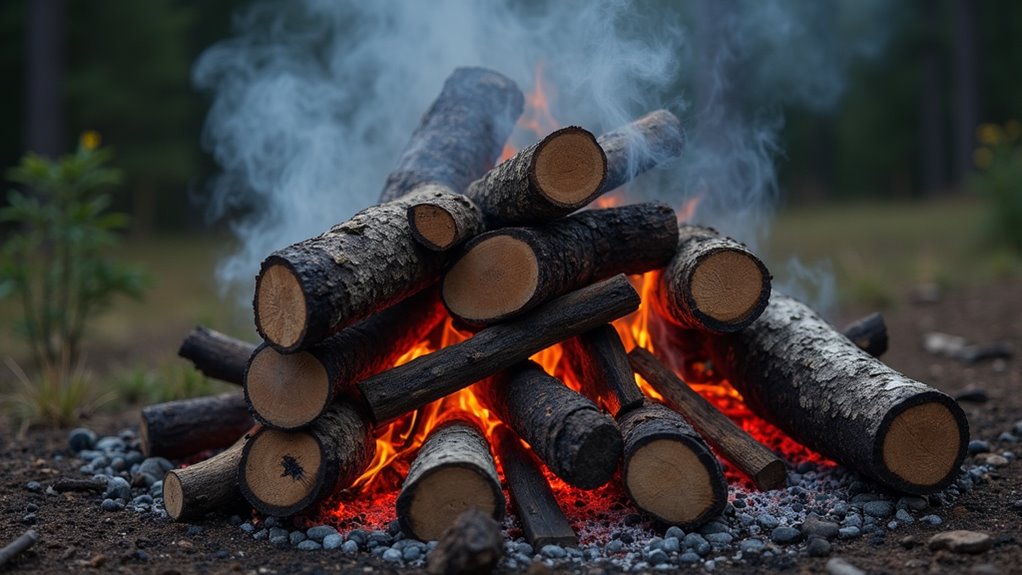
Instead, think of your fire structure as a breathing organism. Leave gaps between logs so air can circulate freely.
The teepee method works well—lean logs against each other with spaces between, creating natural air channels. As your fire grows, you can add larger pieces, but always maintain those essential air pockets.
Don’t overcrowd the fire pit either. Too much wood at once creates the same suffocation problem. Build gradually, adding pieces as needed while keeping airflow your top priority.
Remember that proper campfire safety extends beyond just building techniques to include monitoring and extinguishing your fire completely.
Even the most perfectly built fire can become dangerous the moment you walk away from it. Wind can shift embers toward dry vegetation, logs can roll out of the fire ring, or flames can unexpectedly flare up. You’re responsible for every spark until the fire’s completely extinguished.
Never leave your campfire unattended, even briefly. If you must step away, designate someone reliable to watch it. They shouldn’t just sit nearby scrolling their phone – they need to actively monitor the flames and surrounding area.
Keep water and dirt nearby for emergencies. Watch for flying embers, especially on windy days. If children are present, maintain constant supervision since they’re naturally curious about fire but lack judgment about its dangers.
Following proper campfire safety protocols ensures your camping experience remains both memorable and secure for everyone involved.

When you’re ready to leave your campsite, simply dousing flames with water isn’t enough to fully extinguish a fire. You need to thoroughly mix water with ashes and embers using a shovel or stick.
Many campers make the mistake of pouring water only on visible flames, leaving hot coals buried underneath that can reignite hours later.
Stir the entire fire area until everything’s cool to the touch. Hold your hand near the ashes—if you feel any heat, add more water and continue stirring.
Don’t use dirt alone, as it insulates heat rather than eliminating it. The fire isn’t truly out until you can’t detect any warmth, smoke, or glowing embers.
This thorough process prevents wildfires and protects the wilderness for future campers. Following proper fire safety tips is essential for every camping trip to ensure you leave no trace and prevent potential disasters.
You’ll be shocked to learn that nearly 85% of wildfires are caused by human activity, with unattended campfires being a leading culprit. Don’t become part of this statistic. By avoiding these nine common mistakes, you’re not just protecting yourself and your camping group—you’re safeguarding entire ecosystems. Remember, building a safe campfire isn’t rocket science, but it does require attention to detail. Take these precautions seriously, and you’ll enjoy countless memorable nights around the fire.